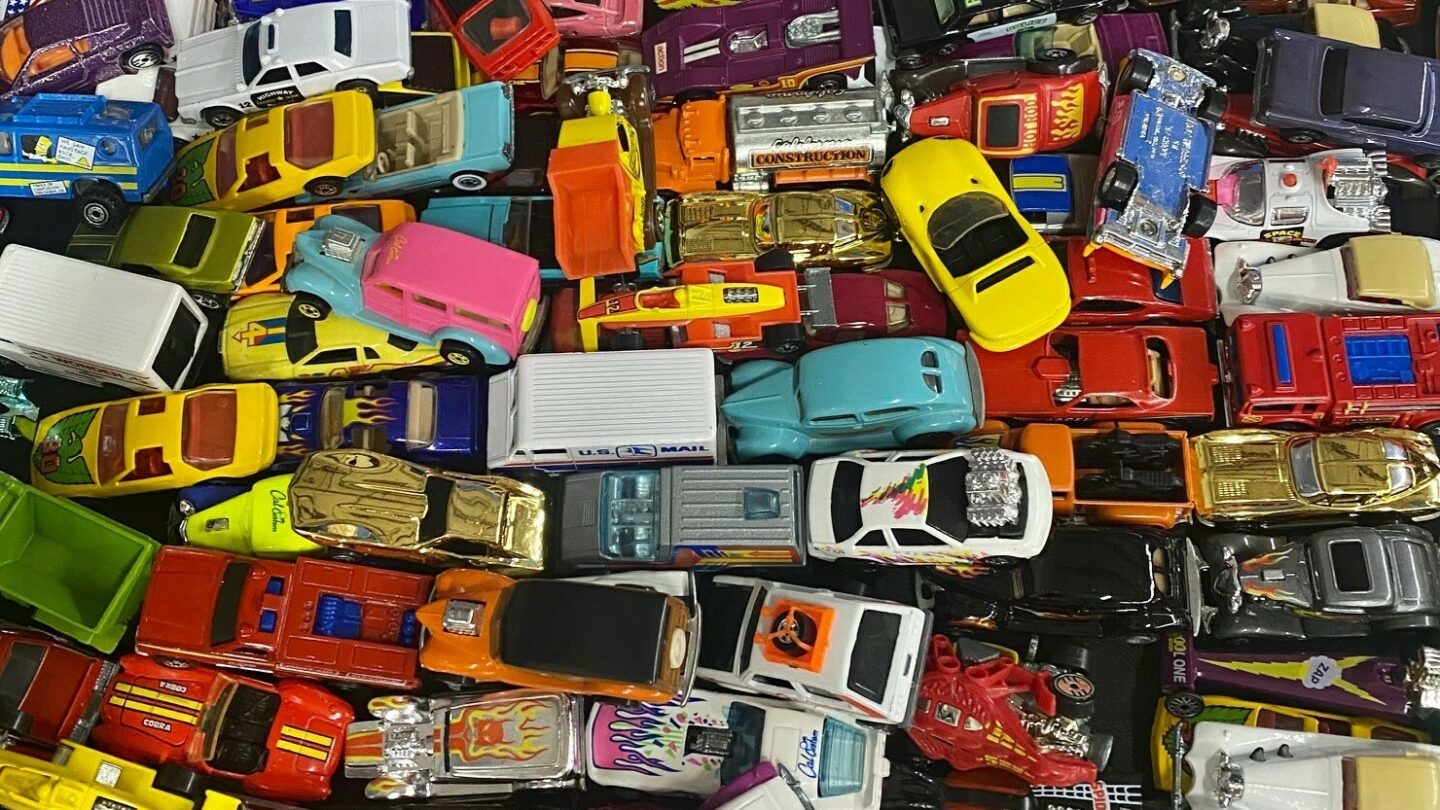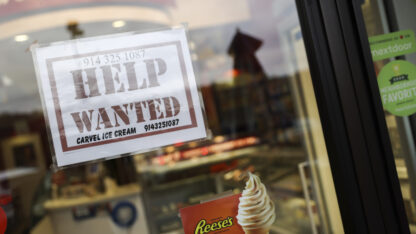Inflation, the curse of our pocketbooks and the Federal Reserve, has hit almost every good in the U.S. But the price of a beloved toy has managed to hover around $1 — for more than 50 years.
Hot Wheels are a retail oddity. They remain one of the most affordable toys in the country at a time when inflation is chipping away at savings accounts and compounding credit card debt for many Americans, experts like James Zahn told NPR.
Zahn is the editor-in-chief of The Toy Book, a trade publication that has covered the toy industry in North America since 1984. Inflation and other supply chain-related factors have boosted prices this year in a few toy categories, most notably action figures, dolls and electronic toys, Zahn said.
On average, The Toy Book has recorded a 15% jump in manufacturers’ suggested prices for a lot of toys this season; many products that would’ve been $19.99 a year or two ago are coming in at $22.99 to $24.99, he added.
“It is exceptionally rare to find a toy that maintains its price for a few years, let alone more than five decades,” Zahn said. “Hot Wheels are an anomaly in that the continued sales volume and razor-sharp production pipeline manage to keep costs just low enough to maintain that sweet $1 price point.”
A brief history of Hot Wheels
Hot Wheels are the brainchild of Elliot Handler, a co-founder of Mattel, who was eager to create toy cars that reflected “the radical versions altered by custom-car shops — like vehicles he often saw on California’s highways,” New York’s Museum of Play states on its website.
The result was an initial run of 16 Hot Wheels — including Camaros, Corvettes, and Firebirds — unveiled at the New York Toy Fair in 1968, MotorTrend reported.
Kevin Feeley happens to own each of these 16 cars (though not in each of the dozens of colors released at the time).
Feeley, of Firestone, Colo., has been collecting Hot Wheels for about 45 years. Included in the 37,000 cars are many coveted Redline models, which feature a red circle on the sidewalls of their tires.
“Early on, they had what was called Spectraflame paint, which was kind of a glittery paint. It was a very shiny paint,” Feeley told NPR. “But the paint they’re using now [for most cars] is not a Spectraflame paint, it’s not as costly of a paint that they use.”
These initial models sold for 69 to 89 cents each (which is about $6 to $7.60 today, accounting for inflation), said Bruce Pascal, an avid Hot Wheels collector and author of “Hot Wheels Prototypes” which includes the narrative history of the toy.
Those prices, combined with promotions at gas stations, were crucial in the early success of Hot Wheels, Pascal said.
“There were a lot of gas stations in the 1970s where if you filled your car up with 8 gallons of gas, you got either a free Hot Wheels or you got one for 69 cents, but most of them gave it to you for free,” Pascal said. “Mostly Shell gas stations, but also private gas stations wanted to get in the game.”
Turning a children’s toy into a serious business
It’s been nearly 55 years since Handler cooked up the idea for Hot Wheels and Ted Wu is helping to keep things pretty radical at the company.
Wu, Mattel’s vice president of design for Hot Wheels, swiveled the chair in his Los Angeles home office in November to show off a collaboration the company did on a Gucci collectible.
“Someone stole my Gucci car, oh no,” Wu said, laughing, unable to find the $120 car on the shelves behind him. “We did the Cadillac Seville. This was a literal Cadillac that Gucci did back in 1972. So we did a die-cast version of it for Gucci’s 100th anniversary.”
The Cadillac marked Hot Wheels’ first high fashion collaboration and one that reflects the evolution of the toy brand and is a reason why so many of its cars maintain that $1 price.
Wu leads a design team of 60 people spread across the U.S. and Asia who are responsible for each Hot Wheels model. The team includes former automotive designers who have worked for Toyota and General Motors, he said.
A glimpse at Mattel’s Hot Wheels store reveals a smorgasbord of collaborations (Nintendo, DC Universe), race track accessories, and toys completely devoid of wheels. The brand has also extended its reach into pop culture through categories like gaming, apparel, film, and NFTs. Then there’s Mattel Creations, which features limited Hot Wheels releases like the RLC Exclusive Nissan Skyline GT-R which retailed for $25 and included a full metal base and Spectraflame paint.
Each Hot Wheels made today contains die-cast or metal in them but less than they did in 1968, Wu said. Parts of each car —which are produced in a limited number of colors— are also made of plastic; sometimes that can be the body or the chassis of the car. These sorts of changes to production have helped keep costs down, Wu added.
While Hot Wheels has fully embraced the nostalgic adult demographic, the production of high-quality, $1 cars, remains at the heart of the company’s mission, Wu said.
“We like to say that everyone’s first car is a Hot Wheels,” Wu said. “And as parents sort of get into that, they sort of rekindle potentially something that they enjoyed themselves.”
Today, more than 16 Hot Wheels cars are sold per second across the globe and more than 6 billion have been produced to date, the company said.
That so many of those billions have been sold to parents looking for an affordable toy for their child says a lot about the brand, said Pascal, the collector.
“You’re gonna buy a Hot Wheel for what, $1.29 today, or whatever the average number is? It’s pocket change,” Pascal said. “One of the reasons why I think Mattel is so successful is, you know, there are 330 million Americans, probably every adult, every kid that you know, has played with the Hot Wheel at one time, because they’re so affordable.”
Copyright 2022 NPR. To see more, visit https://www.npr.org.
9(MDAxODM0MDY4MDEyMTY4NDA3MzI3YjkzMw004))

9(MDAxODM0MDY4MDEyMTY4NDA3MzI3YjkzMw004))








